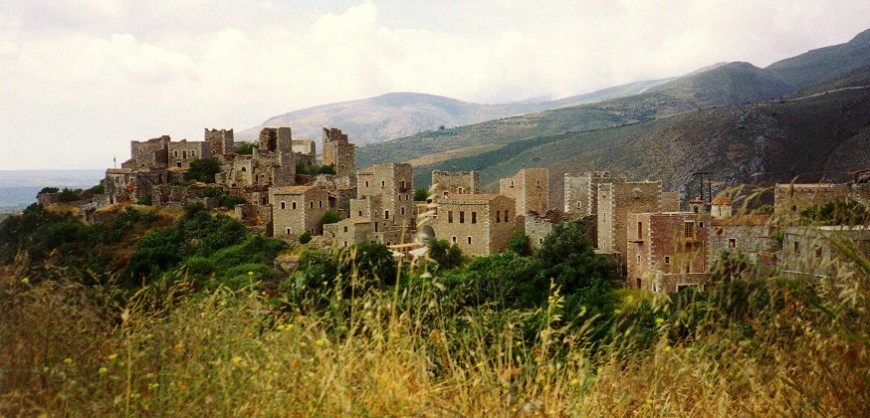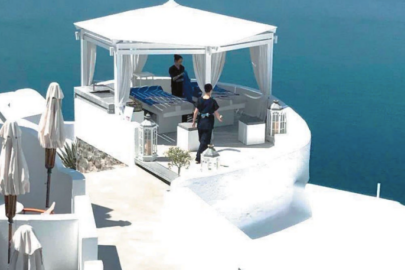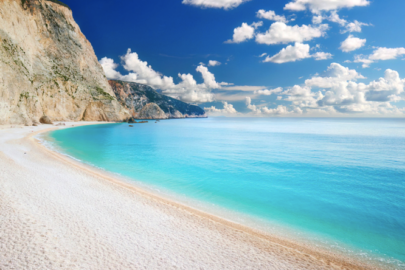Mani, a land of sun, sand and sea, is full of castles, churches and rocky landscapes. A “masculine” region in the Peloponnese, southern Greece. The isolated aspect of this beautiful area merely adds to its medieval beauty. Located in the southernmost or middle peninsula of the Peloponnese, to the east is the Laconian Gulf and the Messenian Gulf is to the West, whereas the peninsula forms a continuation of the Taygetos mountain range.
There are many versions as to the area’s toponymy. It may have come from the Venetian word, Mano, meaning “hand”. “Castle de le Maina” was built by hand by the Venetians, however the name could also be derived from the Latin manus, also meaning “hand”, as the area is shaped in that way. Another version is that it may be based on the ancient Doric Greek word “mãnin”, meaning rage, a name that does indeed represent the rugged landscape.

Getting to know Mani
Mani has traditionally been divided into three regions: Exo Mani (Outer Mani to the northwest), Kato Mani (Lower Mani to the east) and Mesa Mani (Inner Mani to the southwest).
98 of the 118 traditional settlements of the Peloponnese are found here, making up 250 villages with traditional architecture nestled into the hills. Stone towers, castles, churches with amazing frescoes, caves and gorges are scattered throughout the region.
The area’s capital Areopolis, meaning “city of Aris”, is named after the ancient Greek god of war. The Greek War of Independence was started here on March 17, 1821, by Petros Pierrakos the last bey of mani.
Diros Cave in Mani, with its gleaming stalagmites and stalactites, was discovered by speleologists Ioannis and Anna Petrochilos.

At the southernmost tip, past the scenic port of Gerolimena and Vathia, lies Cape Tenaro, where the mythical gates of the underworld were located. The unique place, situated at the end of Mani, separates the Messenian Gulf in the west from the Laconian Gulf in the east.
North of Areopolis, a short distance away from Oitylos, the city of King Menelaus whose wife started the Trojan Wars, lies Limeni, the quaint little fishing village with crystal clear waters. A stronghold of the Mavromihalis family, the area played a significant role in Greece’s struggle for independence. The church of Panagia Vrettis and its bell-tower are an impressive site.
On the other side of Exo Mani, the landscape makes way for more olive trees passing through Lagada, Agios Nikolaos, Stoup and Kardamili moving towards the Messinian capital.


Mani offers visitors everything from stone castles, history and beautiful seaside.

Churches, chapels and monasteries with exceptional frescoes from the Byzantine era are abundant throughout Mani.

Walking paths are ample from Dyros Tower to Prophitis Ilias, from Kotrona, Gonea to Sotiras Monastery, from Drymos to Palaiohori as well as national walway 32 that links Kardaamyli with Vytina of Arcadia.
Local produce includes olive oil, honey, figs, and fresh produce straight from the earth.

How to get there
Follow the Athens-Corinth National Highway to the city of Tripolis. At the Tripolis crossroad, follow the exit towards Sparta. After Sparta head to Gytheio and turn right at the crossing towards Areopolis. The journey takes around 3 1/2 hours from Athens to Areopolis.
Where to stay
You can stay at the center of the peninsula, between Exo and Mesa Mani, with a view of majestic Oitylos at the Petra kai Fos (Stone and Light) Boutique Hotel and Spa that offers tours around the region. The lodgings are in harmony with the natural landscape with 23 rooms and suites. Some of the rooms are equipped with a fireplace and includes a spa, Hioni Spa, for relaxing moments.
Where to eat
* Takis at Limeni. Colored chairs licked by the waves for seafood
* Mavros Peiratis (Black Pirate) at Neo Oitylo offers seafood and traditional Greek appetizers
* Barba Petros at Areopolis for roast beef and meat
* Mavromihaleiko at Areopolis famous for its orange salad
* Drosopigi for traditional Greek food






































